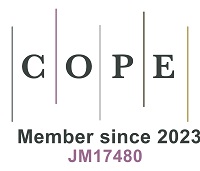REFERENCES
1. Etminan, M.; Myhre, G.; Highwood, E. J.; Shine, K. P. Radiative forcing of carbon dioxide, methane, and nitrous oxide: a significant revision of the methane radiative forcing. Geophys. Res. Lett. 2016, 43.
2. IPCC. Climate change 2013: the physical science basis. In: Contribution of Working Group I to the Fifth Assessment Report of the Intergovernmental Panel on Climate Change. Cambridge: Cambridge University Press. Available from: https://www.ipcc.ch/report/ar5/wg1/ [Last accessed on 12 Sep 2025].
3. Nisbet, E. G.; Manning, M. R.; Dlugokencky, E. J.; et al. Very strong atmospheric methane growth in the 4 years 2014-2017: implications for the Paris agreement. Global. Biogeochem. Cycles. 2019, 33, 318-42.
4. Zhou, Y.; Li, J.; Cui, J.; et al. Personal GHG emissions accounting and the driving forces decomposition in the past 10 years. Carb. Neutrality. 2023, 2, 45.
5. Folberth, G. A.; Jones, C. D.; O’connor, F. M.; Gedney, N.; Griffiths, P. T.; Wiltshire, A. J. Drivers of persistent changes in the global methane cycle under aggressive mitigation action. NPJ. Clim. Atmos. Sci. 2025, 8, 867.
6. Nzotungicimpaye, C.; Macisaac, A. J.; Zickfeld, K. Delaying methane mitigation increases the risk of breaching the 2 °C warming limit. Commun. Earth. Environ. 2023, 4, 898.
7. Wang, Y.; Chen, B.; Guan, C.; Zhang, B. Evolution of methane emissions in global supply chains during 2000-2012. Resour. Conserv. Recy. 2019, 150, 104414.
8. Wang, C.; Miao, Z.; Chen, X.; Cheng, Y. Factors affecting changes of greenhouse gas emissions in Belt and Road countries. Renew. Sustain. Energy. Rev. 2021, 147, 111220.
9. World Bank. World Bank open data. 2022; Available from: http://data.worldbank.org [Last accessed on 12 Sep 2025].
10. Ascensão, F.; Fahrig, L.; Clevenger, A. P.; et al. Environmental challenges for the Belt and Road Initiative. Nat. Sustain. 2018, 1, 206-9.
11. Xiang, T.; Du, M.; Yang, L.; et al. Impacts of trade facilitation on greenhouse gas emissions in the Belt and Road Initiative countries. Resour. Conserv. Recy. 2024, 209, 107777.
12. Zhang, N.; Liu, Z.; Zheng, X.; Xue, J. Carbon footprint of China's Belt and Road. Science 2017, 357, 1107.
13. Zhang, D.; Wu, L.; Huang, S.; et al. Ecology and environment of the Belt and Road under global climate change: a systematic review of spatial patterns, cost efficiency, and ecological footprints. Ecol. Ind. 2021, 131, 108237.
14. Tan, X.; Zhu, K.; Sun, Y.; Zhao, W.; Chen, F. Bibliometric research on the development of climate change in the BRI regions. Adv. Climate. Chang. Res. 2021, 12, 254-62.
15. Li, Y.; Zhong, H.; Shan, Y.; et al. Changes in global food consumption increase GHG emissions despite efficiency gains along global supply chains. Nat. Food. 2023, 4, 483-95.
16. Lee, H. S.; Arestis, P.; Chong, S. C.; Yap, S.; Sia, B. K. The heterogeneous effects of urbanisation and institutional quality on greenhouse gas emissions in Belt and Road Initiative countries. Environ. Sci. Pollut. Res. Int. 2022, 29, 1087-105.
17. Yin, Y.; Xiong, X.; Hussain, J. The role of physical and human capital in FDI-pollution-growth nexus in countries with different income groups: a simultaneity modeling analysis. Environ. Impact. Assess. Rev. 2021, 91, 106664.
18. Yuelan, P.; Akbar, M. W.; Zia, Z.; Arshad, M. I. Exploring the nexus between tax revenues, government expenditures, and climate change: empirical evidence from Belt and Road Initiative countries. Econ. Chang. Restruct. 2022, 55, 1365-95.
19. Shi, K.; Yu, B.; Huang, C.; Wu, J.; Sun, X. Exploring spatiotemporal patterns of electric power consumption in countries along the Belt and Road. Energy 2018, 150, 847-59.
20. Tao, Y.; Liang, H.; Celia, M. A. Electric power development associated with the Belt and Road Initiative and its carbon emissions implications. Appl. Energy. 2020, 267, 114784.
21. Fan, J.; Da, Y.; Wan, S.; et al. Determinants of carbon emissions in ‘Belt and Road initiative’ countries: A production technology perspective. Appl. Energy. 2019, 239, 268-79.
22. Chou, J.; Li, Y.; Xu, Y.; Zhao, W.; Li, J.; Hao, Y. Carbon dioxide emission characteristics and peak trend analysis of countries along the Belt and Road. Environ. Sci. Pollut. Res. Int. 2023, 30, 81881-95.
23. Chen, Z.; Yang, Y.; Zhou, L.; et al. Ecological restoration in mining areas in the context of the Belt and Road initiative: capability and challenges. Environ. Impact. Assess. Rev. 2022, 95, 106767.
24. Zhao, Y.; Liu, X.; Wang, S.; Ge, Y. Energy relations between China and the countries along the Belt and Road: an analysis of the distribution of energy resources and interdependence relationships. Renew. Sustain. Energy. Rev. 2019, 107, 133-44.
25. Hou, J.; Deng, X.; Springer, C. H.; Teng, F. A global analysis of CO2 and non-CO2 GHG emissions embodied in trade with Belt and Road Initiative countries. Ecosyst. Health. Sustain. 2020, 6, 1761888.
26. Wang, X.; Wang, Y.; Wei, C. The impact of natural resource abundance on green economic growth in the belt and road countries: The role of institutional quality. Environ. Impact. Assess. Rev. 2023, 98, 106977.
27. Chen, J.; Zhou, W.; Yang, H.; Wu, Z. “Grouping” or “ride one’s coattails”? - How developing countries along the Belt and Road satisfy themselves. Energies 2021, 14, 3498.
28. Sun, X.; Shi, Q. Factors influencing embodied energy trade between the Belt and Road countries: a gravity approach. Environ. Sci. Pollut. Res. Int. 2022, 29, 11574-89.
29. Li, C.; Liu, B. Air pollution embodied in China’s trade with the BR countries: transfer pattern and environmental implication. J. Clean. Prod. 2020, 247, 119126.
30. Wang, L.; Zou, Z.; Liang, S.; Xu, M. Virtual scarce water flows and economic benefits of the Belt and Road Initiative. J. Clean. Prod. 2020, 253, 119936.
31. Fang, K.; Wang, S.; He, J.; Song, J.; Fang, C.; Jia, X. Mapping the environmental footprints of nations partnering the Belt and Road Initiative. Resour. Conserv. Recy. 2021, 164, 105068.
32. Han, M.; Li, W. Tele-connecting renewable energy availability from production to consumption via multi-national supply chains. Renew. Energy. 2024, 227, 120405.
33. Cai, X.; Che, X.; Zhu, B.; Zhao, J.; Xie, R. Will developing countries become pollution havens for developed countries? An empirical investigation in the Belt and Road. J. Clean. Prod. 2018, 198, 624-32.
34. Fan, J. L.; Dong, Y.; Zhang, X. How does "the Belt and Road" and the Sino-US trade conflict affect global and Chinese CO2 emissions? Environ. Sci. Pollut. Res. Int. 2020, 27, 38715-31.
35. Li, Y.; Bai, X. How can China and the Belt and Road initiative countries work together responding to climate change: a perspective on carbon emissions and economic spillover effects. Int. J. Environ. Res. Public. Health. 2022, 19, 9553.
36. Yang, J.; Gong, T.; Li, C.; et al. Carbon footprint analysis of supply chain of bio-based methyl levulinate production in China. Carb. Neutrality. 2023, 2, 58.
37. Li, Y.; Lin, K.; Huang, Q. Research on the measurement and driving factors of manufacturing export embodied carbon between China and the countries along “the Belt and Road”. Pol. J. Environ. Stud. 2021, 30, 727-37.
38. Yang, Y.; Wang, H.; Löschel, A.; Zhou, P. Patterns and determinants of carbon emission flows along the Belt and Road from 2005 to 2030. Ecol. Econ. 2022, 192, 107260.
39. Han, M.; Lao, J.; Yao, Q.; Zhang, B.; Meng, J. Carbon inequality and economic development across the Belt and Road regions. J. Environ. Manag. 2020, 262, 110250.
40. Lu, Q.; Fang, K.; Heijungs, R.; et al. Imbalance and drivers of carbon emissions embodied in trade along the Belt and Road initiative. Appl. Energy. 2020, 280, 115934.
41. Wang, X.; Yang, J.; Zhou, Q.; Liu, M.; Bi, J. Mapping the exchange between embodied economic benefits and CO2 emissions among Belt and Road initiative countries. Appl. Energy. 2022, 307, 118206.
42. Wang, Z.; Meng, J.; Zheng, H.; et al. Temporal change in India’s imbalance of carbon emissions embodied in international trade. Appl. Energy. 2018, 231, 914-25.
43. Liu, X. J.; Jin, X. B.; Luo, X. L.; Zhou, Y. K. Multi-scale variations and impact factors of carbon emission intensity in China. Sci. Total. Environ. 2023, 857, 159403.
44. Ma, X.; Zhao, C.; Song, C.; et al. The impact of regional policy implementation on the decoupling of carbon emissions and economic development. J. Environ. Manag. 2024, 355, 120472.
45. Shrestha, R. K. Red versus blue states: inequality in energy-related CO2 emissions in the United States (1997-2021). J. Clean. Prod. 2024, 468, 143127.
46. Wu, S.; Chen, Z. Carbon inequality in China: evidence from city-level data. China. Econ. Rev. 2023, 78, 101940.
47. Tapio, P. Towards a theory of decoupling: degrees of decoupling in the EU and the case of road traffic in Finland between 1970 and 2001. Transp. Policy. 2005, 12, 137-51.
48. Lundquist, S. Explaining events of strong decoupling from CO2 and NOx emissions in the OECD 1994-2016. Sci. Total. Environ. 2021, 793, 148390.
49. Naseem, S.; Mohsin, M.; Zia-Ur-Rehman, M.; Baig, S. A.; Sarfraz, M. The influence of energy consumption and economic growth on environmental degradation in BRICS countries: an application of the ARDL model and decoupling index. Environ. Sci. Pollut. Res. Int. 2022, 29, 13042-55.
50. Hu, M.; Li, R.; You, W.; Liu, Y.; Lee, C. Spatiotemporal evolution of decoupling and driving forces of CO2 emissions on economic growth along the Belt and Road. J. Clean. Prod. 2020, 277, 123272.
51. Wang, C.; Wood, J.; Geng, X.; Wang, Y.; Qiao, C.; Long, X. Transportation CO2 emission decoupling: empirical evidence from countries along the belt and road. J. Clean. Prod. 2020, 263, 121450.
52. Wang, J.; Dong, X.; Dong, K. How renewable energy reduces CO2 emissions? Decoupling and decomposition analysis for 25 countries along the Belt and Road. Appl. Econ. 2021, 53, 4597-613.
53. Dong, J.; Li, C.; Wang, Q. Decomposition of carbon emission and its decoupling analysis and prediction with economic development: a case study of industrial sectors in Henan Province. J. Clean. Prod. 2021, 321, 129019.
54. Zhang, Y.; Da, Y. The decomposition of energy-related carbon emission and its decoupling with economic growth in China. Renew. Sustain. Energy. Rev. 2015, 41, 1255-66.
55. Mousavi, B.; Lopez, N. S. A.; Biona, J. B. M.; Chiu, A. S.; Blesl, M. Driving forces of Iran's CO2 emissions from energy consumption: an LMDI decomposition approach. App. Energy. 2017, 206, 804-14.
56. Leontief, W. Environmental repercussions and the economic structure: an input-output approach. Rev. Econ. Stat. 1970, 52, 262.
57. IPCC First Assessment Report (FAR). Climate change: the IPCC response strategies (1990). Available from: https://archive.ipcc.ch/publications_and_data/publications_ipcc_first_assessment_1990_wg3.shtml [Last accessed on 12 Sep 2025].
58. UNFCCC. National inventory submissions 2019 and greenhouse gas inventory data - detailed data by party. Available from: https://unfccc.int [Last accessed on 12 Sep 2025].
59. Ferrario, F. M.; Crippa, M.; Guizzardi, D.; et al. EDGAR v6.0 greenhouse gas emissions joint research centre. 2021; Available from: http://data.europa.eu/89h/97a67d67-c62e-4826-b873-9d972c4f670b [Last accessed on 12 Sep 2025].
60. Lenzen, M.; Kanemoto, K.; Moran, D.; Geschke, A. Mapping the structure of the world economy. Environ. Sci. Technol. 2012, 46, 8374-81.
61. Lenzen, M.; Moran, D.; Kanemoto, K.; Geschke, A. Building eora: a global multi-region input-output database at high country and sector resolution. Econ. Syst. Res. 2013, 25, 20-49.
62. National Development and Reform Commission, Ministry of Foreign Affairs, Ministry of Commerce of China. In: Vision and Actions on Jointly Building Silk Road Economic Belt and 21st-Century Maritime Silk Road Foreign Languages Press, Beijing. 2015. Available from: https://www.fmprc.gov.cn/wjb_673085/zzjg_673183/gjjjs_674249/gjzzyhygk_674253/ydylfh_692140/zywj_692152/201503/t20150328_10410165.shtml [Last accessed on 12 Sep 2025].
63. Jiang, X.; Green, C. The impact on global greenhouse gas emissions of geographic shifts in global supply chains. Ecol. Econ. 2017, 139, 102-14.
64. Peters, G. P. From production-based to consumption-based national emission inventories. Ecol. Econ. 2008, 65, 13-23.
65. Peters, G. P.; Minx, J. C.; Weber, C. L.; Edenhofer, O. Growth in emission transfers via international trade from 1990 to 2008. Proc. Natl. Acad. Sci. USA. 2011, 108, 8903-8.
66. Taherzadeh, O. Locating pressures on water, energy and land resources across global supply chains. J. Clean. Prod. 2021, 321, 128701.
67. Gu, A.; Zhou, X. Emission reduction effects of the green energy investment projects of China in belt and road initiative countries. Ecosyst. Health. Sustain. 2020, 6, 1747947.
68. Cheng, S.; Qi, S. The potential for China's outward foreign direct investment and its determinants: A comparative study of carbon-intensive and non-carbon-intensive sectors along the Belt and Road. J. Environ. Manag. 2021, 282, 111960.
69. Gao, C.; Zhu, M.; Sun, M.; Gao, A. Uncovering the trade-induced air pollution inequality among Belt and Road Initiative (BRI) countries. J. Clean. Prod. 2023, 411, 137283.
70. Wu, W.; Zhang, N.; Li, A.; Chen, Y. The path to global climate justice: from the perspective of regional discrepancy in embodied carbon emissions. Environ. Impact. Assess. Rev. 2024, 105, 107410.
71. Zhang, C.; Fu, J.; Pu, Z. A study of the petroleum trade network of countries along “The Belt and Road Initiative”. J. Clean. Prod. 2019, 222, 593-605.
72. Zhang, J. Oil and gas trade between China and countries and regions along the ‘Belt and Road’: a panoramic perspective. Energy. Policy. 2019, 129, 1111-20.
73. Sarker, M. N. I.; Hossin, M. A.; Yin, X.; Sarkar, M. K. One belt one road initiative of China: implication for future of global development. Mod. Econ. 2018, 9, 623-38.
74. Fan, J.; Xu, M.; Li, F.; Yang, L.; Zhang, X. Carbon capture and storage (CCS) retrofit potential of coal-fired power plants in China: The technology lock-in and cost optimization perspective. Appl. Energy. 2018, 229, 326-34.








